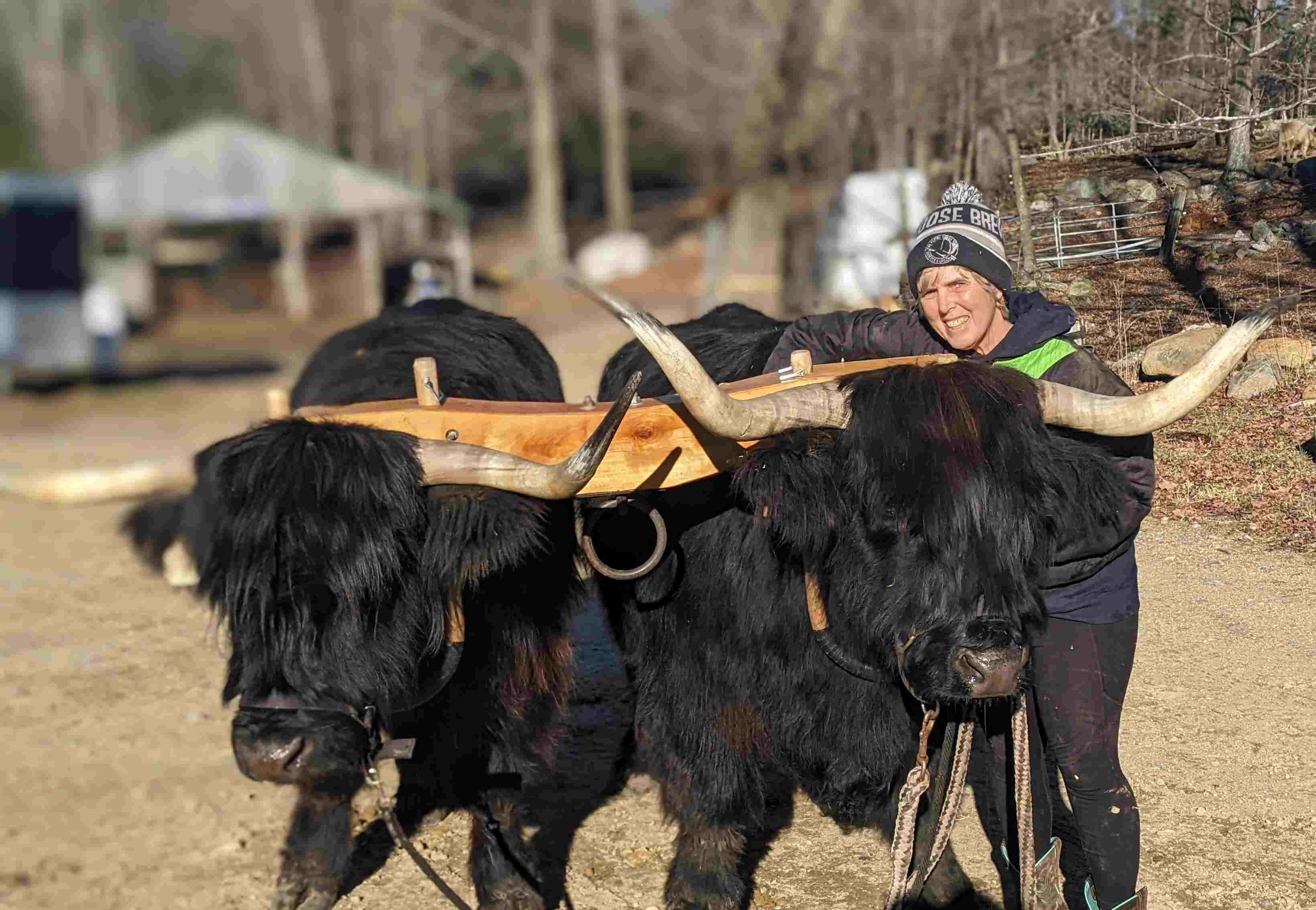Two More Calves Join the Herd
posted on
April 15, 2023
When a calf is born, it’s a miracle. Two calves delivered within 24 hours are two little miracles. That very thing happened this year. Jethro is one of two Scottish Highland calves who recently joined the Miles Smith Farm herd.

The crowds had left, the cattle were back in their pastures, and Miles Smith Farm’s pre-Easter celebration of springtime was over. During the event, more than 50 children (not all at once) had climbed onto the back of our mighty Scottish Highland ox, Curious Bleu. The kids and their parents had snuggled with our rabbits, hugged Millie the calf, fed our steers alfalfa cubes, and scratched Joy’s belly, our “welcome dog.” As they left the farm, visitors were asked, “What did you like?”
“June and her calf Dolly.”
“Joy the dog.”
“The rabbits.”
“Everything.”
Visitors loved the day, but so did the animals, who got unlimited alfalfa cubes.
A week before the event, June, the cow, a first-time mother, had separated herself from the herd. She was pacing, lying down, and getting up, so I brought her to the holding pen for observation. Two hours later, two little hooves were sticking out. I attached a rope to each leg, and as June pushed, I pulled. Seconds later, she gave birth. It took a while for June to accept her calf, whom I named Dolly, but soon she was licking the newborn, and within two hours, the Dolly was nursing.
Most cows give birth easily in the field, but sometimes human assistance is needed. During calving season, checking on pregnant cows twice a day is essential.
The First Calf
After the springtime celebration, I checked on expectant Daisy and found her standing over her shivering calf, licking it. The calf was alive and breathing but still in danger. Like other cows before her, Daisy had chosen a remote pasture away from the herd to give birth. Cows like this field because it provides privacy, but it also abuts the coyotes’ forest. Years ago, coyotes had taken a newborn calf who wandered into their woods.
Daisy’s calf was small and too weak to walk, so I carried him with Daisy following behind. My husband, Bruce, made sure that Daisy, with her long horns, didn’t get too close when I took one of my frequent breaks. The calf, now named Jethro, weighed only 50 pounds, but that is a lot for a 71-year-old woman to carry. Safe with his mother in the holding pen, Jethro started nursing right away. All was well with this pair.
The Second Calf
The next day I was surprised to find an unchaperoned newborn calf in the barnyard. At first, I thought Jethro had escaped, so I carried the calf to the holding pen, where the real Jethro was sleeping.
Virginia, an elderly cow, was cooing and pacing. She calmed down when reunited with her calf, whom I named Easter Lily or Essie. But Essie was tall for a calf, and Virginia was short for a cow, and Essie couldn’t figure out how to dip down to nurse.
In a yoga-like position, I supported Essie with my right leg while I pushed her head down, level with her mom’s teats. She’d leave her head there for a second, then lift it out of scoring position. Like bouncing a basketball, I repeated the pushing process until one time, she left her head at the right height. While squirting milk in her direction, I gently pushed a teat into her mouth. After a few tries, Essie latched on and sucked down life-giving milk and colostrum for a few minutes.
The Magic
After latching on to a teat, most calves will nurse without human assistance, but Essie required my help at three more feedings before getting the knack of it.
After crouching down under a cow and carrying a calf, I was sore and tired. But the thought of the two new calves who had joined the farm made it all worthwhile.
June and her calf, Dolly, at Miles Smith Farm




